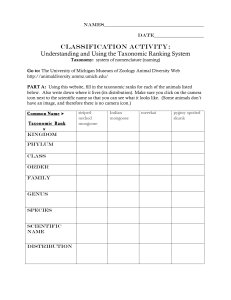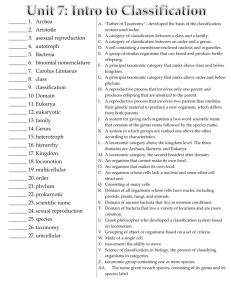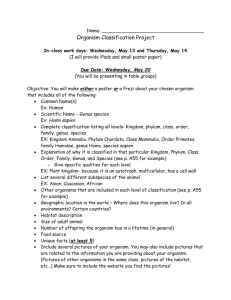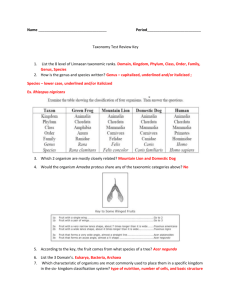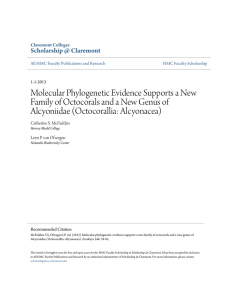Midterm exam #2 Take-home questions MB 451 Microbial Diversity
advertisement
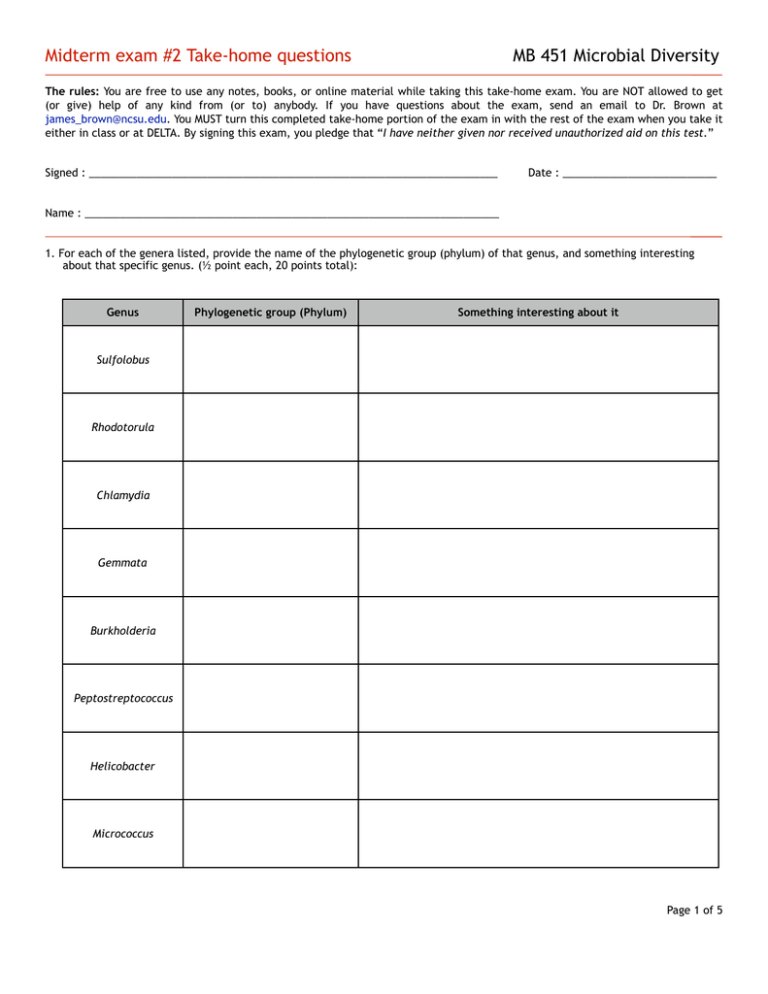
Midterm exam #2 Take-home questions MB 451 Microbial Diversity The rules: You are free to use any notes, books, or online material while taking this take-home exam. You are NOT allowed to get (or give) help of any kind from (or to) anybody. If you have questions about the exam, send an email to Dr. Brown at james_brown@ncsu.edu. You MUST turn this completed take-home portion of the exam in with the rest of the exam when you take it either in class or at DELTA. By signing this exam, you pledge that “I have neither given nor received unauthorized aid on this test.” Signed : _____________________________________________________________________ Date : __________________________ Name : ______________________________________________________________________ 1. For each of the genera listed, provide the name of the phylogenetic group (phylum) of that genus, and something interesting about that specific genus. (½ point each, 20 points total): Genus Phylogenetic group (Phylum) Something interesting about it Sulfolobus Rhodotorula Chlamydia Gemmata Burkholderia Peptostreptococcus Helicobacter Micrococcus Page 1 of 5 Genus Phylogenetic group (Phylum) Something interesting about it Cristispira Thermosipho Thermoplasma Flavobacterium Deinococcus Crithidia Stylosphaera Oscillatoria Methylobacterium Roseiflexus Azorhizophilus Allochromatium Page 2 of 5 2. You have isolated an unknown organism in lab. You’ve misplaced your notes and your plates, so you don’t know anything about it. But your ssu-rRNA PCR was successful, and you have good sequence data. From this sequence, you generate the following tree: UNKNOWN Bacillus mycoides Actinomyces urogenitalis Spirochaeta africana Escherichia coli Chlorobium limicola Bacteroides fragilis Chlamydia suis Planctomyces brasiliensis Calothrix brevissima Roseiflexus castenholzii Thermus oshimai Thermotoga elfii Thermocrinis ruber Methanocaldococcus jannaschii Scale: 0.1 List 5 things you can or can’t predict with reasonable confidence about this organism (2 points each, 10 points total). Common features of Bacteria, or life in general, will not accepted, e.g. “it has DNA”, “it doesn’t have Golgi”, or “don’t know what country it comes from”. You are allowed to include taxonomic identification only once, e.g. “it’s a mammal”. Hint : If it tree’ed out as a mammal, you could predict it had a bony skeleton, mammary glands (if female), and hair, but unless it tree’ed specifically within a particular group, you couldn’t predict it whether it was a carnivore or herbivore, or how big it is. 2.1. 2.2. 2.3. 2.4. 2.5. Page 3 of 5 3. Based on the placement of this organism in the previous tree, you create a more detailed tree: UNKNOWN Heliobacterium sulfidophilum Heliobacterium undosum Heliobacterium gestii Heliobacillus mobilis Heliorestis daurensis Heliorestis baculata Heliophilum fasciatum Veillonella atypica Sporomusa malonica Peptococcus niger Peptostreptococcus anaerobius Eubacterium limosum Bacillus mycoides Staphylococcus aureus Lactobacillus intestinalis Streptococcus entericus Erysipelothrix rhusiopathiae Clostridium thermobutyricum Gracilibacter thermotolerans Ruminococcus flavefaciens Escherichia coli Scale: 0.1 List 5 new things you can or can’t predict about this organism with reasonable confidence (2 points each, 10 points total). Once again, common features of Bacteria, or life in general, will not accepted. You are allowed to include taxonomic identification only once. These have to be new - something you could not have stated based on the prior tree. 3.1. 3.2. 3.3. 3.4. 3.5. Page 4 of 5 4. Both Chloroflexi and Chlorobi use electrons from sulfide or hydrogen for reducing power for carbon fixation. Compare and contrast the mechanisms by which these two kinds of organisms do this. What are the advantages and disadvantages of each? Use your own words to demonstrate that you actually understand this. (10 points) Page 5 of 5
